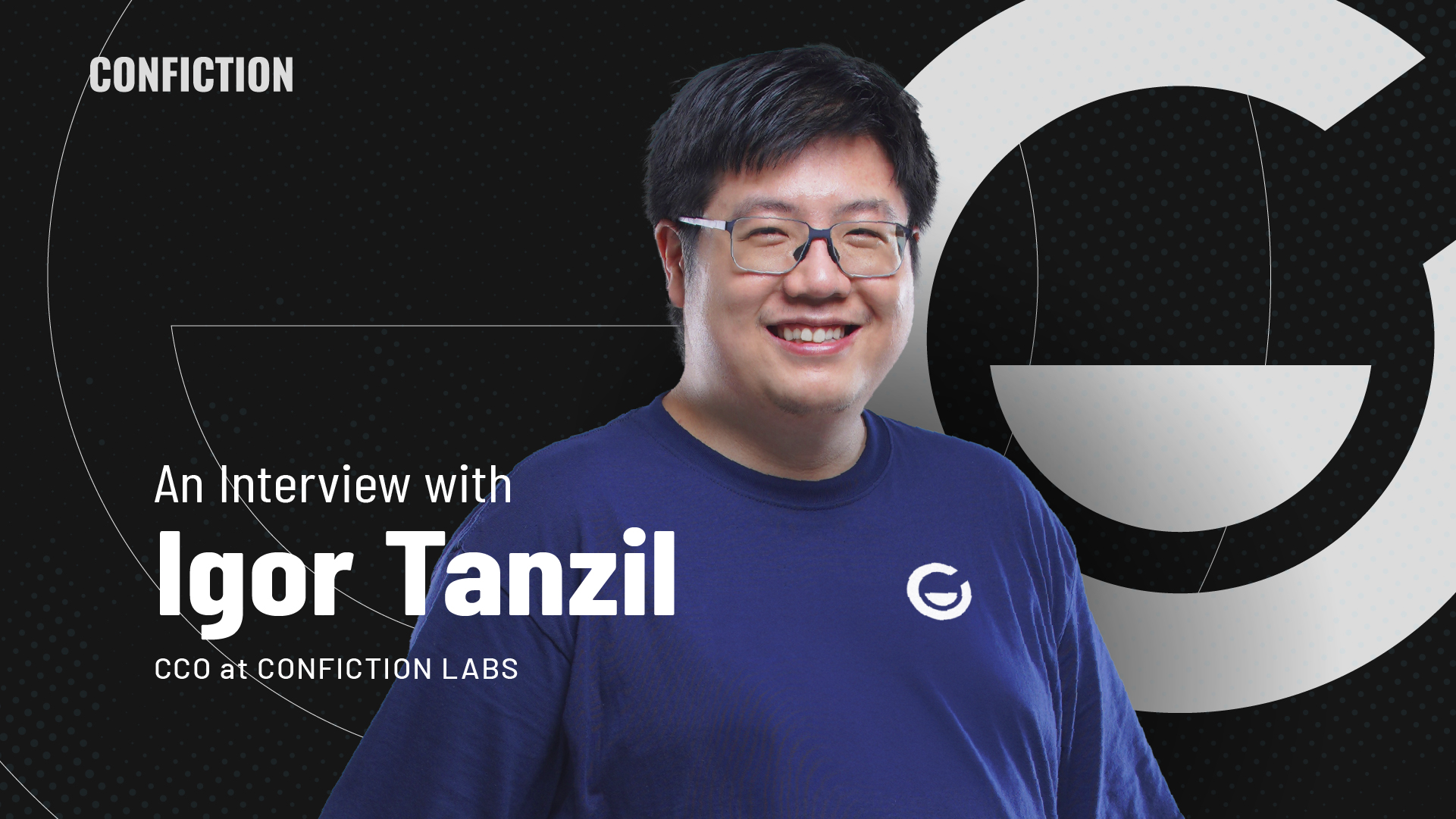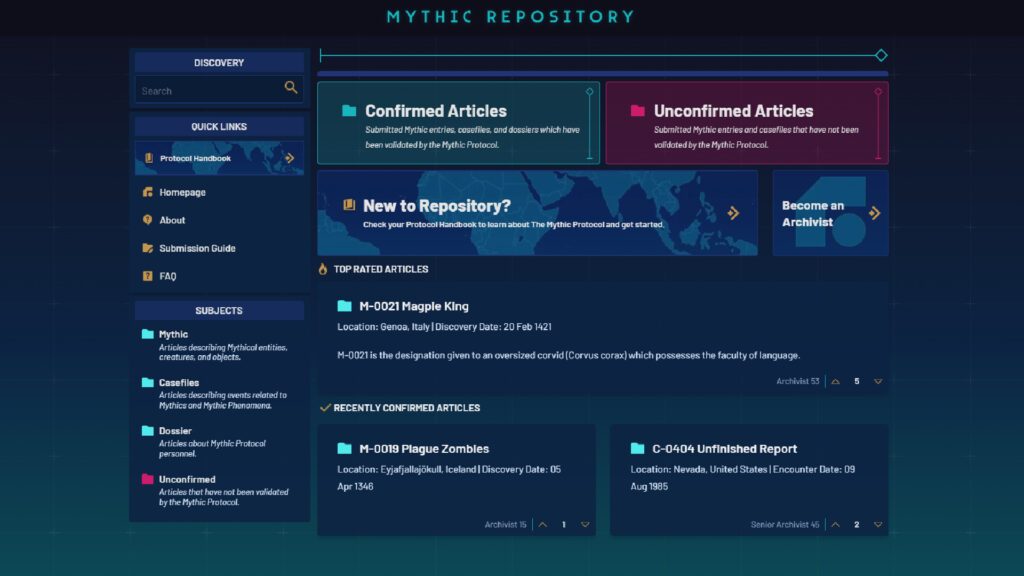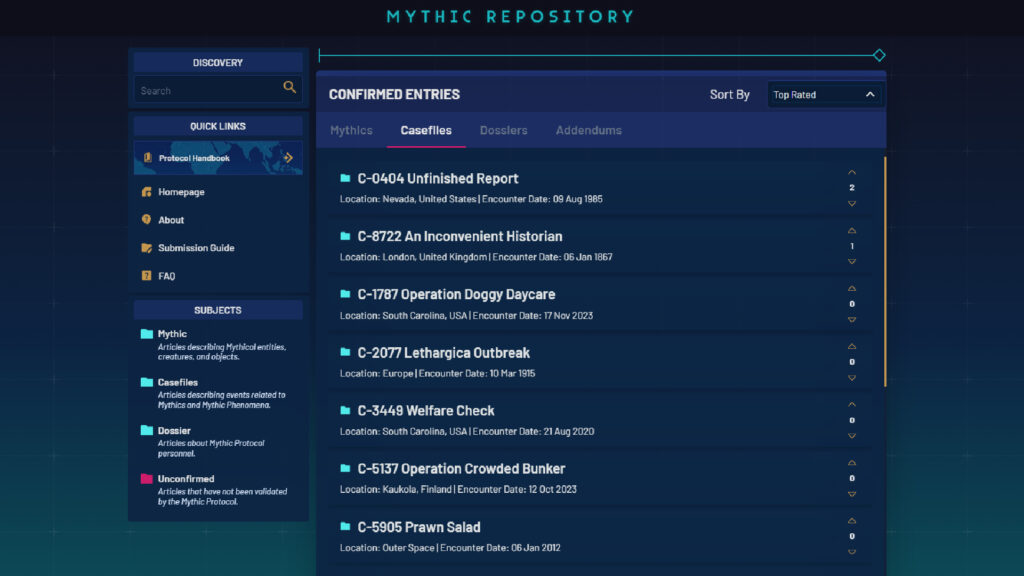
Igor Tanzil is the Chief Creative Officer at Confiction Labs and the creative mind behind Riftstorm, spearheading the development of the wider Occultical universe and helping pioneer Collaborative Entertainment. His unwavering belief in the vision of Confiction Labs to revolutionize the entertainment industry drives him to explore all the vast possibilities unlocked by new technology such as web3 and AI.
Early in his life, Igor’s aspirations were rooted in filmmaking. As he was studying film in college in the US, his horizons expanded when he took a class in copywriting. His natural talent for writing drew the attention of one of his professors, who encouraged him to explore different artistic fields, broadening his skill set and connecting him with other creative minds.
When circumstances made it difficult to continue his career in the US, Igor went back home to Indonesia, where he was invited to become part of the emerging game development industry as a marketer. He began diving deeper into the technical aspects and the design process that went into making games, which reignited his passion for storytelling. Eventually, he founded his own studio alongside his former bosses, and this paved the way for his next role at Agate International, where he contributed to establishing Indonesia as a key player in the game development industry.
Today, with Confiction Labs, Igor is at the forefront of a new era of game development, pushing the boundaries of what is possible with web3. In the following interview, he shares his insights on how Collaborative Entertainment (CE) can change the gaming experience for players, creatives, and developers. He also offers his perspective on how CE could potentially influence the entertainment industry in the future.

Joining Confiction Labs meant moving from web2 game development to web3. What was the process there and how did you manage the transition?
Igor: Before we got into web3, all we saw from the game developer side was Axie Infinity and how they were making in a day what we were targeting annually. Our team was working on mobile games with projections that weren’t even close to all these web3 games. Truthfully, initially, we all thought it was just going to be a fad that’s going to pass.
Fast forward a month later, and we were getting pitches from web3 teams. NFTs were booming and these projects approached us needing a game. What became rather disheartening was that a lot of these projects rejected our proposals because they just wanted something that could be released in two weeks. These projects were not using the games in the way that they should — building fun experiences or actual economies. We’d already seen it work in MMOs and mobile games.
It led to us asking the question: “Why don’t we do it ourselves and see how it goes?” We got a small team together and discussed it. We looked at what people were doing in web3. And for many, the economics just didn’t make sense. If you’re setting aside a massive marketing budget to onboard players by incentivizing them, you’re able to attract a large number of “players” quickly, but it isn’t sustainable long-term. So we asked ourselves, “What actually matters in games?” and at that time, the only thing we could think of was legacy.
What if my Runescape character from the early 2000s could be sold and made official? The way I look at blockchain technology is that it functions simply as security. Not in a financial sense, but in the sense that it protects the code — the legacy of your characters and your assets. To that end, our premise was very simple. Legacy is all that matters. We’re going to do it with our characters and our weapons; build it so that our ARPG can further player narratives and legacies through them.
Over the next few months, we started fundraising and building. That’s when things started to click and we began meeting the real idealists in web3. They were talking with us about how this could be the future. If we could track legacy on an asset level, why can’t we track legacy on the ownership level of an IP? It wasn’t just about Riftstorm being a game that had an NFT-based character in it. It’s now about how we can democratize input and collateralize ideas on a massive scale. Here’s a real opportunity with a lot of financial value. Then we started asking, “What’s the bigger picture here? What’s the thing that can actually live 5-10 years down the line?” That’s when we started forming the concept of Collaborative Entertainment.
“Collaborative Entertainment comes down to allowing gamers the choice to impact the games and the worlds they’re playing in a way that we haven’t seen before.”
Can you tell us more about Collaborative Entertainment and how it can change the gaming experience?
Igor: The ideal vision of Collaborative Entertainment is that anyone can have the agency to choose how they interact with an IP. If they want to create, they can have their input. If they just want to be consumers, then maybe that consumption itself can have a direct impact on the IP. That’s definitely that bigger vision: empowering as many people as possible to have a choice in how an IP grows and evolves over time.
We’ve seen how open MMOs like Eve Online have these very dynamic player-driven conflicts and stories coming out because there is a sandbox of inputs being allowed. Obviously, it’s not applicable to every game. The idea here is, how can we take these concepts and apply them so that everyone playing a game can have input?
Collaborative Entertainment starts with a willingness on the part of the developers to allow a large part of the game to have input. What that input is depends on the developer, the genre, and the specific game. In Riftstorm, the input is going to be quest completion and other data points, say, the number of mythics that you’ve killed. We want to take that input and build in actual consequences. That consequence can be on a direct, seasonal, and many other layers in between. It can impact the world in terms of missions and drops. We can also take it on a larger level, where, at the end of the season, all of your actions and decisions will equate to the next evolution of the world and story.
In 2023, we started testing it out in Riftstorm. We set out specific goals and gave them a binary choice: “Either you kill this many monsters or you don’t.” The result will be these two varying story arcs and we show that it’s up to the players. By the next playtest, we wanted to take it a step further. We had the writing team create loose outlines for the story depending on the outcome. We can have more complex decisions later, but for the purpose of a playtest, let’s just do a binary success or fail. It surprised us because a lot of people failed, and that forced us to go in that direction of the story. It was interesting and a lot of fun.
Collaborative Entertainment comes down to allowing gamers the choice to impact the games and the worlds they’re playing in a way that we haven’t seen before.

From your perspective as a writer and creative director, how does Collaborative Entertainment change the experience of creatives?
Igor: This is the part that really excites me. Before entering the gaming industry, I wanted to be a Hollywood filmmaker and write films, but my circumstances hindered that. It was already difficult to get into Hollywood, and when I was working as a copywriter for an advertising firm, I wasn’t able to secure a work visa. Despite that, my writing experience would be what helped me land a bigger opportunity in Indonesia, where I joined the gaming industry. When we started Confiction Labs and began conceptualizing Collaborative Entertainment, I realized its potential to empower a new generation of creatives.
What if, you can create a way for people to provide input and be heard? There’s a lot of inspiration that can be taken from web2 here. Our biggest inspiration is the SCP Foundation Wiki. It’s this collaborative writing project that started in the early 2000s and now there are more than 9,000 entries.
However, even with something as open as the SCP, there are still massive barriers to entry. You need to submit it in a very specific format, and the nuance can be extremely difficult, even for very seasoned writers. Then, you have to hope that it has enough traction to make it in. It’s a challenging process.
So how do we break down the inputs into multiple layers? The big players will be the developers. These are going to be the big projects, like game studios, that want to build on top of your IP. That’s the big player collaboration layer between project and IP. Then, how can we make that simpler by boiling down ideas to a point where anyone can get their cool point across?
That’s where our world’s Repository comes in — ideas for characters, stories, and monsters, in our case, are submitted and stored there. You can translate it into different themes, depending on your IP. The idea of writing a mythic entry where you have a cool monster idea and you don’t have to write it in a specific format, as long as it’s interesting, can work. We’ve been working to find that balance of the entry being simple enough so that anyone can write it while providing enough information for others to build upon it.
How does this change the experience for creatives? As franchise builders, we need to have the willingness to accept input from creators at any scale. The big studios can come and say they want to take our concept and build a game. A writer could have an idea for this monster but they don’t have the time to draw concept art. Even then, they can spend a day writing an entry, submit it, have it reviewed by the market and then potentially have it canonized down the line.
“Input will not be limited to 10 people in Hollywood. It’s going to be 100,000 to a million players and creators with their own ideas.”
Considering the entire entertainment industry, what’s your vision for Collaborative Entertainment?
Igor: My biggest argument for Collaborative Entertainment and why we need to have more empowered input into IPs is that we’ve seen massive IPs stagnate over time. It’s two to three movies or other media out, and then it goes downhill. Maybe a franchise gets very myopic and formulaic because there is an internal unwillingness to change.
Collaborative Entertainment on an IP scale is finding that balance of an auteur’s vision — our ideas in building Riftstorm and the stories therein — but allowing ourselves and forcing ourselves to understand that not everything we’re going to do will be good. Not everything will be what the market wants.
The hope is that we launch with the monsters that we want and then have input from people in another part of the world with a cooler concept than ours. Maybe a filmmaker can take one of our case files and complete it. They show it in a movie or a comic, and it becomes the updated version of the case file. We leave things open-ended enough so people can build on top of them.
That’s what I think can fundamentally change how entertainment itself works. Instead of having a very small cabal of creatives controlling what we consume, now we have input directly from the market saying that this monster or this story is cool. People are voting on it and ideas are immediately validated in the market. Then we can incentivize the creators to build more and equitably reward the initial creator for coming up with that idea. If all of those things work, maybe we’ll have IPs that are a lot more accessible to people. Input will not be limited to 10 people in Hollywood. It’s going to be 100,000 to a million players and creators with their own ideas.
“What Collaborative Entertainment has the potential to do is put value on ideas. Ideas can be shared and everybody can build on top of them, and they are equitably rewarded.”
What do the next 12 months hold for Confiction Labs? What about the next 5-10 years?
Igor: I think this year is going to be all about us proving ourselves. It’s proving that the game works and that our hypotheses about empowering people to create input can work. Then somewhere along the way, we’ll have the launch of Riftstorm, which will be the ultimate test of the market, where we have players and an early access game to test out the big theories of Collaborative Entertainment. Would season-based storylines work? Can we have people bridge that gap between web2 and web3, blurring those lines and having these participants meld together? That’s going to be the big focus and challenge for the next 12 months.
Beyond that, once we have that initial semblance of success in the hypotheses, we can start proving Collaborative Entertainment is replicable. It can’t just be with one IP. We will begin building FICT TWO, and maybe we will build it in-house or with a partner or someone else, but it’s all about expanding the concept, formula, and system with as many other franchises as possible. That’s what I see happening in the next four to five years.
In 10 years, the hope is that we have fundamentally shifted the entertainment industry. If Collaborative Entertainment works, then we would have changed how society sees and values creativity. Right now, ideas are cheap unless they become reality. What Collaborative Entertainment has the potential to do is put value on ideas. Ideas can be shared and everybody can build on top of them, and they are equitably rewarded.
At the end of the day, we all have the potential to make each other laugh, cry, or be fearful. All these emotions are universal. Everybody has the capacity to create. We hope that, in 10 years, we’ve made a small dent in seeing that come to pass.
Join the Confiction Labs Portal and begin exploring Riftstorm and Collaborative Entertainment.
Learn more about how Collaborative Entertainment is transforming legacy in gaming.
Follow Confiction Labs and Riftstorm on X for the latest updates.

